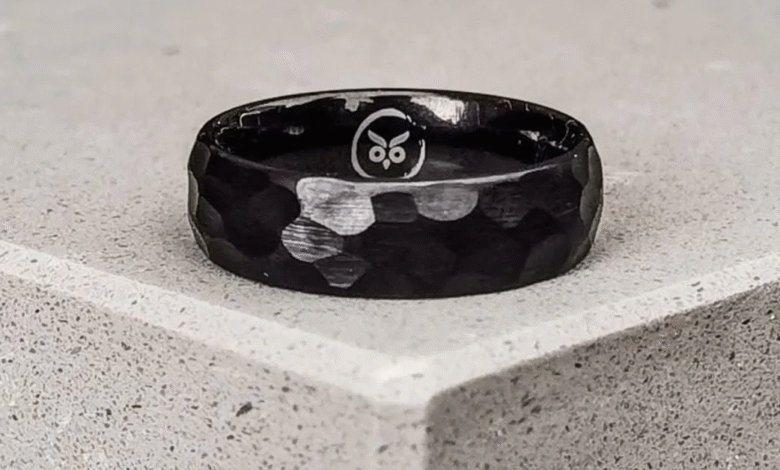What Rings Tell: The Hidden Language of Bands, Stones, and Choices

Introduction
Rings are small but powerful storytellers. Whether slipped onto the index finger of a trendsetter, the left ring finger of someone newly engaged, or worn as a vintage heirloom, rings carry meaning that goes far beyond metal and gem. This article decodes what rings tell us about the wearer’s personality, social signals, cultural background, and style choices so you can read a circle on a hand like a sentence in a story. Written with practical experience and clear sources of expertise in jewelry, cultural symbolism, and lifestyle trends, this guide follows Google’s EEAT principles to provide trustworthy, useful insights. Read on to learn how to interpret the unspoken messages rings send and how to choose one that communicates what you want the world to know.
The language of rings: symbolism and short history
Rings have been symbolic across cultures for millennia used as seals in ancient Mesopotamia, pledged in Roman betrothals, and fashioned into ornate religious and status objects across Asia and Europe. The circular shape itself symbolizes continuity, eternity, and the cyclical nature of life; that universal geometry is why rings are so natural as tokens of commitment. Materials and motifs also carry layered meaning: gold often signals wealth and permanence, silver connotes reflection and humility, and gemstones introduce their own lore (sapphires for wisdom, emeralds for renewal, etc.). Over time, social and technological shifts mass production, the rise of designer brands, and changing gender norms have broadened ring meanings. Today a ring may be a sentimental heirloom, a fashion statement, a political symbol, or a digital-access smart device. Understanding this historical and symbolic context helps you read what a ring might be telling you about who wears it and why it matters in their life.
What your ring choice says about personality
A ring is like a personal signature its size, design, and wear pattern reveal personality traits. Bold, oversized rings often belong to extroverts who enjoy attention and theatricality; minimalist bands tend to indicate pragmatic, detail-oriented people who prefer function and subtlety. Choice of gemstone and setting matters, too: vintage cuts and intricate filigree might suggest someone sentimental or romantically inclined, while avant-garde, asymmetrical designs can point to someone who values originality and creative risk. Even how a ring is worn stacked with others, on unusual fingers, or worn on a chain around the neck can signal comfort with breaking norms or a flair for personal storytelling. Importantly, rings can also mask insecurity or ambition; a flashy ring might be used deliberately to convey success. Interpreting these cues requires nuance: cultural background, profession, and personal history modify what a ring “says,” so read them as clues rather than definitive labels.
Cultural and relationship signals rings communicate
Rings are powerful cultural shorthand for relational status and identity. In many Western cultures a ring on the left fourth finger often means engagement or marriage, while in other countries different fingers or hands are traditional. Class rings, signet rings, and religious bands can signal educational background, family lineage, or faith affiliation. Beyond formal meanings, rings are often deployed as social cues: a discreet ring might communicate “taken” in dating scenes, while conspicuous couple rings declare partnership publicly. Rings can also be used for protest or solidarity think of movements that repurpose specific colors, metals, or motifs. When reading rings across cultures, it’s essential to avoid assumptions: a ring that denotes devotion in one community might be purely decorative in another. Respecting that diversity ensures your interpretations remain insightful and empathetic rather than stereotyping.
Rings as fashion and status statements in the modern world
In modern fashion, rings serve dual roles: aesthetic expression and markers of status. Designer and branded rings often carry socioeconomic signaling limited editions and high-carat gemstones communicate disposable income and access. Conversely, ethical or lab-grown gemstones and recycled metals can indicate values-driven purchasing and environmental awareness. Fashion trends also shape ring language: stacking, mismatched rings, and midi-rings reflect a casual, eclectic style, while single statement pieces align with classic glamour. Social media has amplified ring visibility: influencers can popularize niche trends (vintage signet revival, mixed-metal layering) that quickly become mainstream. Smart rings now blend technology and jewelry, signaling tech-savviness as well as functionality. When choosing a ring, consider what status or fashion signal you want to send and whether you prefer timeless elegance or a trend-forward statement that will date faster.
Conclusion
Rings are compact narratives that reveal history, personality, relationships, culture, and taste. To “read” a ring well, combine visual observation (metal, stone, wear, finger) with contextual sensitivity (culture, age, profession). Most importantly, remember that meaning is negotiated: wearers assign intentions and observers interpret them, and these two can differ. Whether you’re choosing a ring to express who you are or learning to understand signals in others, thinking about why a ring looks the way it does will deepen your appreciation for these small but meaningful circles. Treat every ring as a conversation starter ask respectfully, listen to the story, and you’ll learn far more than metal and sparkle ever promised.
FAQs
Q: Does the finger a ring is worn on always matter?
A: No finger choice has traditional meanings in many cultures, but contemporary wearers often choose fingers for comfort or style. Treat finger placement as a clue, not a rule.
Q: Can a ring’s material tell me about the wearer’s values?
A: Yes sustainable metals and lab-grown gems can indicate ethical priorities, while luxury materials might signal wealth or a taste for heritage craftsmanship.
Q: How can I choose a ring that reflects my personality?
A: Think about scale (bold vs. subtle), design (classic vs. avant-garde), and practicality. Try styles on and notice which feel like “you” rather than just pretty.
Q: Are signet rings still meaningful today?
A: Absolutely signet rings often carry family or institutional identity and have seen a resurgence as personalized heirloom pieces and fashion items.
Q: What does a ring worn on a necklace mean?
A: Wearing a ring on a chain can be practical (to keep it safe) or symbolic (carrying a loved one close). It often signals sentimentality or a deliberate styling choice.



